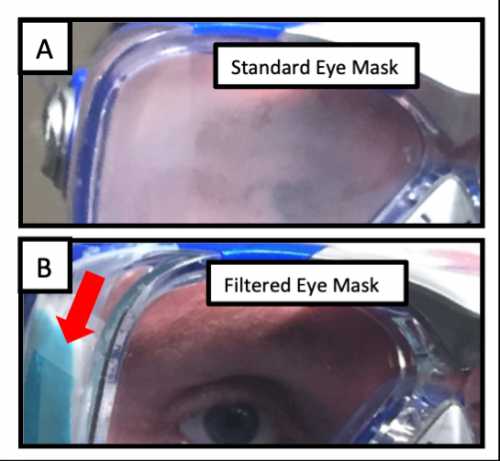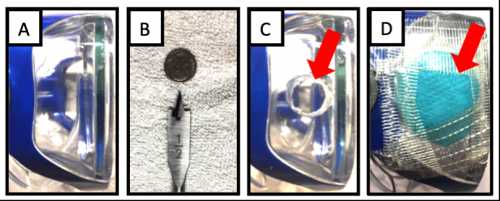
23 Apr Adding a Filtered Eye Mask May Reduce COVID-19 Infections
MedicalResearch.com Interview with:
David B. Douglas, M.D., M.P.H.
Harvard T.H. Chan School of Public Health
MedicalResearch.com: What is the background for this study?
Response: Health care workers are facing the major threat of catching COVID-19 through their eyes, yet currently available eye protection is inadequate. Specifically, the use of open-type eye protection allows airborne viruses to float over the top, around the sides or under the bottom of the lenses and contact the eyes. Additionally, eye protection is well known to fog up, which limits usability by making even the most basic tasks challenging. In fact, fogged goggles is a major barrier to use.

The building of the filtered eye mask prototype.
MedicalResearch.com: What are the main findings?
Response: In this study, a “filtered eye mask” was built by incorporating a high efficiency N95 air filter into a set of goggles. The filtered eye mask did an excellent job at preventing fog formation. Additionally, the N95 filter is also designed to prevent any airborne viruses from entering the goggles.

This shows the 5-minute image of the standard eye mask and the filtered eye mask, which demonstrated how a mask without a filter can really get fogged up.
MedicalResearch.com: What should readers take away from your report?
Response: The biggest takeaway is that improvements in eye protection have the potential to both increase usage and prevent COVID-19 transmission, especially to health care workers.
MedicalResearch.com: What recommendations do you have for future research as a result of this work?
Response: I would recommend that filtered eye masks be manufactured and tested. If proven effective, filtered eye masks can be disseminated to health care workers and other at risk populations.
MedicalResearch.com: Is there anything else you would like to add?
Response: Yes, I think that individuals with prolonged exposures to crowded environments with poor air circulation, such as subways, would especially benefit from usage of filtered eye masks. On a broader sense, this could help increase protection against COVID-19 as our country and the world go back to work.
Preventing airborne spread of COVID-19 is a big deal. So, I would like to leave the reader with a mental picture of how airborne spread might occur. Imagine looking at rays sunlight passing through your living room in the early morning. One can see dust particles floating and twirling in the air currents. So too can airborne viruses spread.
Any disclosures?
Yes, I am a co-author of two patents pending on eye protection where I have improved the filtered eye mask design many times over. I would gladly share my designs with any and all parties who might be interested in collaborative research to combat COVID-19.
Citation:
Addressing the corona virus outbreak: will a novel filtered eye mask help?
Douglas, David et al.
International Journal of Infectious Diseases, Volume 0, Issue 0
JOIN OUR EMAIL LIST
[mailpoet_form id="5"]We respect your privacy and will never share your details.
[last-modified]
The information on MedicalResearch.com is provided for educational purposes only, and is in no way intended to diagnose, cure, or treat any medical or other condition. Always seek the advice of your physician or other qualified health and ask your doctor any questions you may have regarding a medical condition. In addition to all other limitations and disclaimers in this agreement, service provider and its third party providers disclaim any liability or loss in connection with the content provided on this website.
Last Updated on May 12, 2020 by Marie Benz MD FAAD

